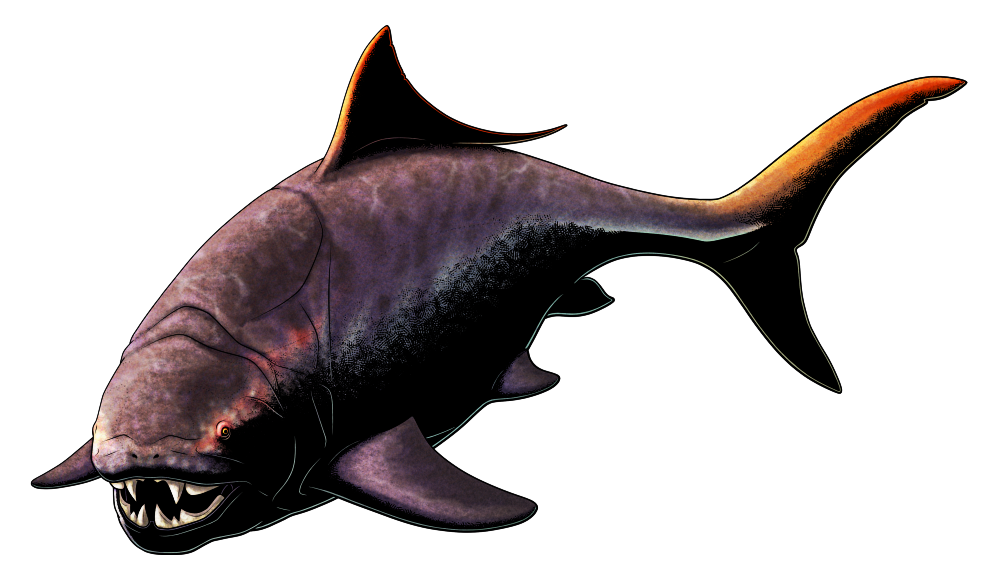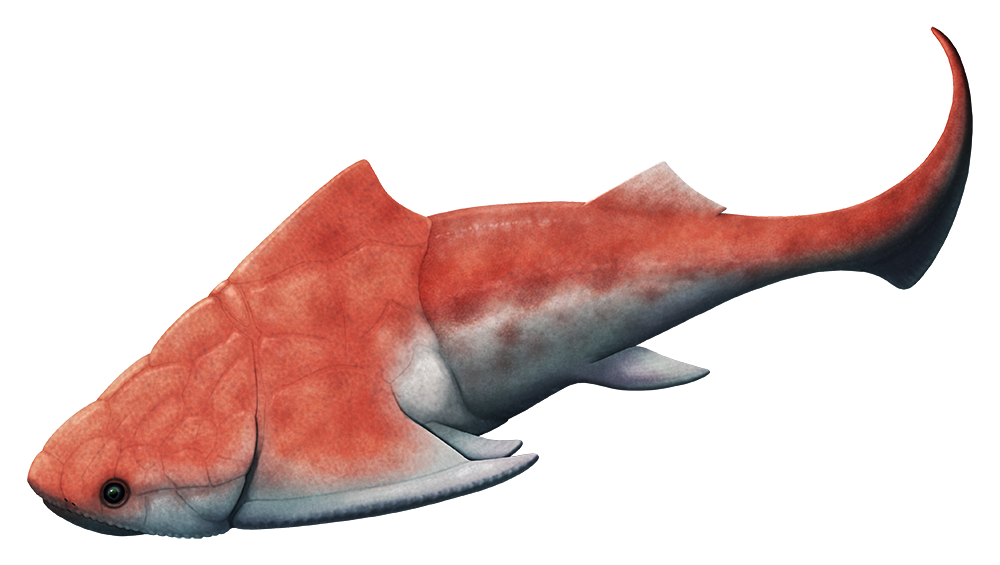With its armored head and blade-like jaws, the placoderm fish Dunkleosteus terrelli is an iconic Paleozoic animal.
Living during the Late Devonian, about 375-359 million years ago, in subtropical waters covering parts of what are now North America and Europe, this species is known mostly just from the bony plates that covered its head and thorax. The rest of its skeleton was cartilaginous and rarely ever fossilized (only a few vertebrae and the pectoral fin are currently known), so its full body shape and size is poorly understood, and previous length estimates have ranged all the way up to 10m (33′).
…Except it turns out it wasn’t nearly that big.
Based on its head proportions, along with comparisons to more complete remains of other arthrodire placoderms, recent studies instead come up with a maximum length of about 4m (~13ft) – giving Dunkleosteus a much shorter-but-heavier chunky body shape, more like a tuna than a shark.
But even after this size revision Dunkleosteus would have still been one of the largest animals around at the time, with the ability to snap its jaws open at high speed and an incredibly strong bite force. It was probably specialized to mainly prey on other heavily-armored animals such as other placoderms and shelled cephalopods, and was likely a strong swimmer with a shark-like tail fin.
Preserved stomach contents in one fossil show remains of the fast-swimming cartilaginous fish Orodus – suggesting that much like the modern tuna it resembled, Dunkleosteus was also capable of bursts of high speed.


